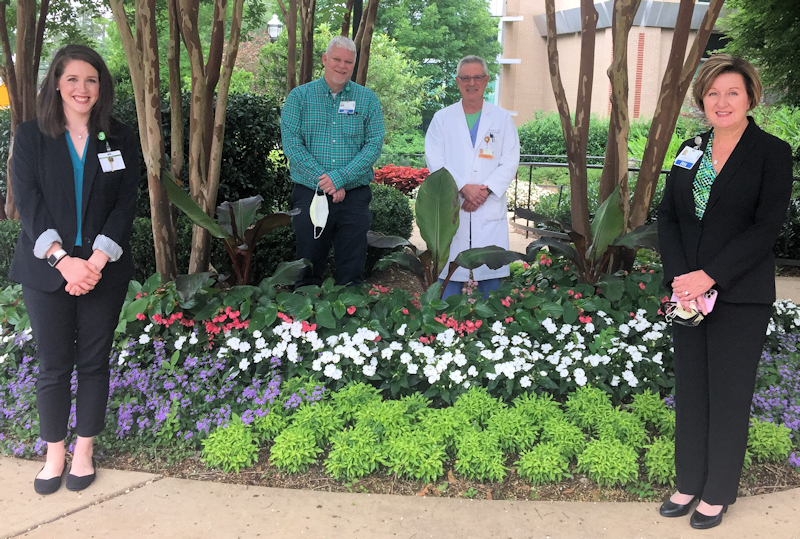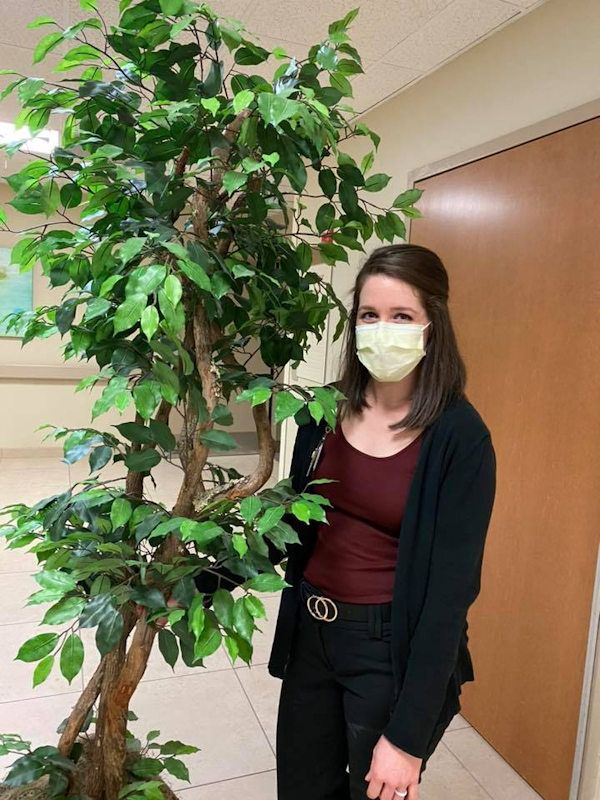 With advancements in medicine extending patients’ lives every day, the options for how those patients spend their remaining days, weeks, months and years are growing, too.
With advancements in medicine extending patients’ lives every day, the options for how those patients spend their remaining days, weeks, months and years are growing, too.
Hospice care is a well-understood, defined bend in the road for patients, families and healthcare providers, with actions to treat or cure ending and the focus shifting to comfort during the patient’s final days.
However, the relatively new area of non-hospice palliative care — in its third year and expanding at Tanner — is providing an interdisciplinary approach to ensure patients and family are educated and supported as they face a life-limiting diagnosis or serious illness. Tanner palliative care services are currently offered on an inpatient basis at Tanner Medical Center/Carrollton and Tanner Medical Center/Villa Rica.
Palliative care ensures the patient’s voice is heard in critical quality-of-life discussions and, if the patient is unable to make decisions, that the patient’s decision maker is identified and supported while the patient’s wishes are honored. Other disciplines — chaplain, nutrition, speech therapy, clinical pharmacy, etc. — are involved as needed to help identify and meet the patient’s needs and goals. A transition to hospice care may occur for some patients, but it is not a given.
Unlike hospice care, which means an end to most treatments — such as chemo for cancer patients — and generally a maximum six-month life expectancy with normal disease progression, “palliative care can begin at diagnosis of a chronic condition or any point that follows, with no defined timeframe,” said Tammy Owenby, RN, director of care management for Tanner.
Palliative care for the whole patient
Palliative care is managed by an interdisciplinary team. The plan for each patient is based on an assessment of several needs — physical, psychological and psychiatric, social, spiritual, religious and existential, and cultural. Other considerations include end-of-life care and ethical and legal needs.
The initial fulltime palliative care staff of two — Tim Adams, BSN, palliative care coordinator, and Briana Moore, LMSW, a master social worker in palliative care — is expanding this summer to include Thomas E. Reeve, III, MD, surgeon for Carrollton Surgical Group, as the physician champion.
“We are excited that Dr. Reeve will bring physician expertise and passion for the complexly ill patient to our team. His personal and professional experience will enable him to work well with patients and families,” said Owenby.
For Dr. Reeve, a second-generation Tanner surgeon, palliative care is one of many amazing transitions in medicine during his own 33-year career and was integral to the care his father, Thomas E. Reeve, Jr., provided as Tanner’s first surgeon. It’s also care that he and his family have experienced firsthand and appreciated.
According to Reeve, major advancements in cancer treatment, and advanced lung, cardiac, kidney, and liver disease, as well as age-related orthopedic morbidity have expanded the physician's and hospital's role into that of long-term caregivers.
“Managing the care of these patients is new ground for many of us who have lived and practiced through this transition in medicine. Each of us at Tanner is confronted and challenged daily by the extended blurry gray line emerging between life and death… and the quality of life during that transition. In my opinion, that is where palliative care has found its niche and comfort zone,” he said.
In his own parents’ final days, Dr. Reeve said, “The wonderful assistance of the palliative and hospice caregivers provided our family with tremendous peace, and huge spiritual and emotional comfort.”
Tackling tough questions during difficult times
 Just as with hospice discussions, complex medical decision making can be difficult and emotional, but it’s made easier when the patient’s wishes are known — either because they are able to speak for themselves, they have completed advance care planning or because they have identified a surrogate to make decisions on their behalf when they can’t. Palliative care staff can help by providing the structure to those conversations, with great sensitivity and knowledge.
Just as with hospice discussions, complex medical decision making can be difficult and emotional, but it’s made easier when the patient’s wishes are known — either because they are able to speak for themselves, they have completed advance care planning or because they have identified a surrogate to make decisions on their behalf when they can’t. Palliative care staff can help by providing the structure to those conversations, with great sensitivity and knowledge.
An order from the patient’s physician is the starting place for palliative care, either at the physician’s recommendation or at the patient’s request for a consult.
“Our physicians are our customers, and our patients and families are our primary beneficiaries,” said Adams.
“Over my entire career, I have known many physicians and providers who are a natural at introducing and articulating the difficult options that arise during these discussions,” said Dr. Reeve. “But, there are many who struggle out of their heartfelt fear of extinguishing hope. It’s only natural for us to have that fear. That is where the palliative care team is invaluable and can provide a much-needed resource to all.”
Members of the palliative care team will meet with the patient and family to educate, inform and equip them with information about services and accommodations available to them and then support them as they travel the path they’ve chosen. Plans are always subject to change based on the patient’s needs and wishes, as well as disease progression.
They’ll also meet with families and staff ongoing to continue conversation surrounding the patient and family’s goals, including with the hospitalists who provide important inpatient care but may not have a long-term, personal relationship with the patient.
"As a chaplain, I provide a safe place for the patient and family members to sort through questions without fear of judgment. By actively listening to their concerns, I can help them process their feelings of sadness, anger, confusion, guilt or any other emotions that bubble up to the surface," said Chaplain Joannah Cook, MDiv, who along with Chaplain Faith Johnson, MDiv, support the palliative care team, patients an families.
Every patient is personal
For Tanner’s palliative care team, every patient situation is unique and very personal — and a privilege for them to support.
Adams recalls one young, very ill patient with advanced cancer whose goal was to have as much quality time as possible at home with a spouse and young children. The patient’s care plan focused on a medication change that addressed side effects, symptom management for the disease itself, at-home support including home health nurse visits, a wheelchair for mobility and IV medications. Tanner contacted third party services to support the patient at home in between hospitalizations.
Through intimate discussions, the patient, spouse, physician and Adams gained an understanding of when declining quality of life would change those priorities to comfort-focused care for the patient’s final days. When that time came, everyone knew what to expect, a relationship had developed, and the patient felt empowered to voice a choice for comfort care, which the spouse, family and medical team readily supported those final days.
During the height of the COVID-19 pandemic, when Tanner neared ICU capacity with sick patients and no visitors were allowed, Adams spent several hours daily on the phone with relatives facilitating those crucial conversations and communicating them with Tanner staff.
According to Owenby, some of these were previously healthy patients with active lives who were stricken suddenly with this virus, and their conditions deteriorated in a matter of days.
“Our palliative care team helped families cope with the changes, make decisions about quality of life and walk through the disease journey,” she said.
When a seriously ill patient talked about how much she missed the trees in her yard — and the palliative care team knew she would not be going home — Moore was able to bring a tree to her hospital room to give her a reminder of her comforting home environment.
“We try to identify what the patient finds important, and determine how we might help,” said Moore. “That means ensuring the patient’s voice is heard even if they have a goal that is not in line with that of the physician or family members. It’s their decision and we try to empower that.”
Dr. Reeve agrees. "I have always believed that the art of listening to the concerns, anxieties and fears of the patient and their families is paramount. Otherwise, you have no true idea of where they stand. It takes patience, time and a patient ear to glean that. In virtually all of my years practicing medicine, I have come to believe that the key is that there is no right or wrong as to the decision that is made. The patient and the families have to make the decisions. Let their hearts be the guide, along with clear advice from the patient's care team. When that decision is based on the foundation of doing the best for our loved ones, it is the right decision."